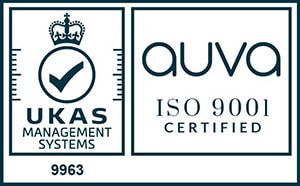
How to save money with a new boiler – go Dutch!
Boilers are boilers, right? They come in a white case which we all try to hide away, they heat the home and the hot water and they’re on call as and when we need them. But while boilers perform the same function, they’re not all the same. And the Intergas range of boilers is unlike any other… in a good way! It’s true we’re not a very familiar name here, but in the Netherlands we’re superstars! And it’s all down to our design engineers who created a revolutionary new boiler that broke the mould. Today this boiler is not only as energy efficient as they come, it delivers rock-solid reliability. According to Which? Magazine’s Trusted Traders report on boiler faults, the components most likely to let you down, in order of unreliability, are: (i) diverter valve, (ii) automatic air vent, (iii) pressure relief valve and (iv) printed circuit board. Well, the Intergas combi boilers don’t have a diverter valve and none of the boilers have an automatic air vent, so you’ve cut any possible problems by half.
Want more detail on these two components? Here you go:
Diverter valve
Normally a combi boiler has two heat exchangers, the primary one is for heating, the secondary plate heat exchange is for hot water. The diverter valve is used to switch between the two. Our bithermic heat exchanger (its design is unique and it’s patented) is built in one, with two separate circuits, one for heating, the other for hot water, which renders a diverter valve unnecessary.
Automatic air vent
An automatic air vent (AAV) is prone to leaks as dirt and debris can become trapped in the AAV’s housing. We prefer to avoid that problem and only use a manual air vent in all our boilers.
Why Intergas boilers save energy
Condensing boilers became mandatory in the UK back in 2005 to help improve energy efficiency, reduce carbon emissions and save on bills but, 17 years on, most boilers don’t achieve condensing mode for long periods due to the design of the heat exchanger. A typical domestic condensing boiler consists of two separate heat exchangers, main and secondary. The main heat exchanger extracts the heat from the burner, and this heats the water which is pumped around the heating system. The secondary heat exchanger, usually a small plate-to-plate type, heats the water when there is a demand for domestic hot water.
The Intergas heat exchanger is very different because it’s bithermic, which means it has two separate waterways within it, one for heating and one for hot water. It’s also much larger than traditional heat exchangers; its greater surface area and increased waterways guarantee ultra-efficient heat transfer and, as cold water is constantly fed into it during hot water production, unlike traditional heat exchangers, the flue gas temperature is reduced so more latent heat is extracted which, in turn, helps the boiler to condense virtually all the time. This saves energy and money and protects your boiler from excessive cycling which will affect its performance and longevity. If you’d like more details on our range of boilers, please visit: www.intergasheating.co.uk






